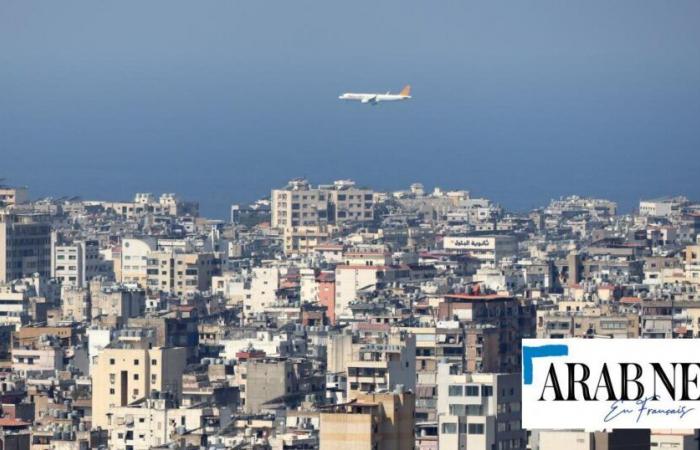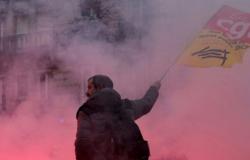BEIRUT: Israel carried out new strikes on Tuesday against Hezbollah in Lebanon, one of which killed a military leader of the movement, a day after bombings that killed more than 550 people, stoking fears of a regional conflagration nearly a year after the start of the war in Gaza.
“Lebanon is on the brink,” UN Secretary-General Antonio Guterres told the United Nations General Assembly in New York, which opened in the midst of a military escalation between the Israeli army and Hezbollah, supported by Iran and allied with Palestinian Hamas.
The situation in Gaza “is a permanent nightmare that threatens to drag the entire region into chaos. Starting with Lebanon,” added Antonio Guterres, calling for an “immediate” ceasefire in the Palestinian territory.
The Israeli army announced that it had killed in an airstrike on Tuesday in Beirut, “Ibrahim Mohammed Kobeissi, the commander of the missile and rocket system” of the Islamist movement. A source close to Hezbollah confirmed the death of the “military commander”.
The raid, in the southern suburbs of the capital, one of Hezbollah’s strongholds, killed six people according to the health ministry, destroying two floors of a building located in a densely populated area, according to an AFP photographer.
– “Massive strikes” –
The army announced Tuesday afternoon that it was carrying out “massive strikes” on Hezbollah targets, after initial raids on “dozens of targets” of the movement in southern Lebanon.
“We will continue to strike Hezbollah. And I say to the Lebanese people: our war is not against you” but “against Hezbollah,” Israeli Prime Minister Benjamin Netanyahu said in a video released by his office.
Hezbollah claimed responsibility for firing Fadi 2 rockets at Israel and announced that it had targeted military sites near Haifa, the major northern port, including an “explosives factory” about 60 kilometers from the Lebanese border, as well as the town of Kiryat Shmona.
In Haifa, where fighter jets flew over, schools, universities and shops remained closed, according to an AFP journalist.
Monday’s bombardments, of an intensity unprecedented since the start of the exchange of fire on the Israeli-Lebanese border in October 2023, targeted around 1,600 Hezbollah targets, according to the army, in southern Lebanon and the Bekaa Valley in the east.
They left 558 dead, including 50 children and 94 women, and 1,835 wounded, according to the country’s authorities, the heaviest human toll in one day since the end of the civil war (1975-1990). The Israeli army reported a “large number” of Hezbollah members killed.
Tens of thousands of people, according to the UN, have fled the bombed areas towards Saida, the largest city in the south, Beirut or Syria.
On Tuesday, long lines of cars were blocked on the road leading to the capital. In Saida, people formed queues in front of gas stations and bakeries.
Schools and universities will remain closed until the end of the week in the country. Many airlines announced on Tuesday to suspend their flights to Beirut.
– “Day of terror” –
“It was a day of terror,” Thuraya Harb, a 41-year-old Lebanese woman who took refuge near Beirut after an eight-hour drive from Toul, her village in the south, told AFP.
“I didn’t want to leave, but the children were scared,” the woman added.
The head of a health center in Saksakiyeh, near Sidon, described scenes of horror.
There were “many dead: children, women, people whose limbs, noses or hands had been torn off, their heads broken”, others who were “disemboweled”, said Doctor Moussa Youssef, stressing that “90% of the wounded” who arrived at the center “were children”.
Israel announced in mid-September that it was moving the “center of gravity” of its military operations to the north of the country, to allow the return of tens of thousands of displaced residents.
Defense Minister Yoav Gallant said Monday that Hezbollah was experiencing its “most difficult week since its creation” in 1982.
Hezbollah has vowed to continue attacking Israel “until the end of the aggression in Gaza,” where the war was triggered on October 7, 2023 by Hamas’ unprecedented attack on Israeli soil. Since then, exchanges of fire have not stopped on Israel’s northern border with Lebanon.
They have intensified since the wave of deadly explosions of Hezbollah’s transmission devices, attributed to Israel, on September 17 and 18 in Lebanon, then an Israeli strike on September 20 on the southern suburbs of Beirut, which decapitated the movement’s elite unit.
– “Incomprehensible” –
At the United Nations podium, US President Joe Biden echoed the concerns of the UN chief, warning of a “generalized war” in Lebanon and saying it was “time to finalize now” a ceasefire agreement in Gaza.
Iran’s new president, Massoud Pezeshkian, told CNN on Tuesday that Hezbollah could “not stand alone” against Israel. He blasted the United Nations’ “inaction” toward Israel as “incomprehensible,” on X.
France has called for an emergency meeting of the UN Security Council, with Iraq asking for an “urgent meeting” of Arab countries.
Despite the general concern, both sides understand the risks of a full-scale war, says Israeli political analyst Michael Horowitz.
“It is an extremely dangerous situation, but in my opinion there is still room for diplomacy to avoid the worst,” he told AFP.
The Hamas attack that sparked the war in Gaza on October 7, 2023, resulted in the deaths of 1,205 people, mostly civilians, according to an AFP tally based on official Israeli figures that include hostages who died or were killed in captivity in Gaza.
Of the 251 people abducted, 97 are still being held in Gaza, including 33 declared dead by the army.
In retaliation, Israel has promised to destroy the Palestinian Islamist movement, which has been in power in Gaza since 2007 and which it considers a terrorist organisation, as do the United States and the European Union.
Its military offensive in Gaza has so far killed 41,467 people, mostly civilians, according to data from the Hamas government’s health ministry, which the UN considers reliable. It has also caused a humanitarian disaster there.






